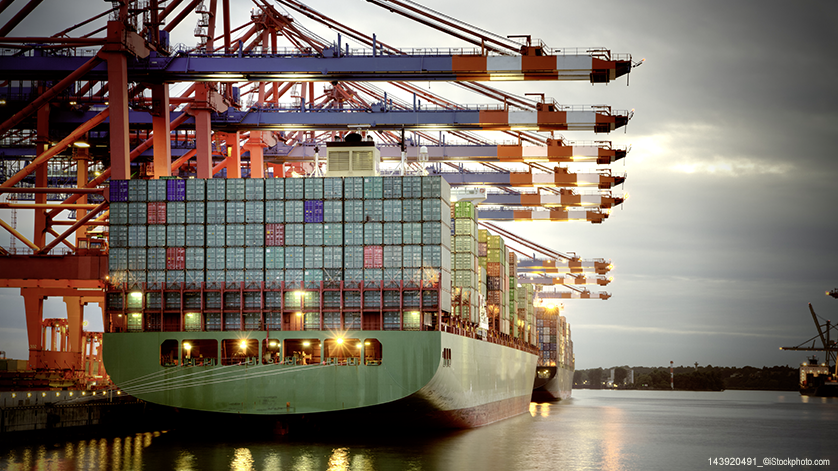
There is always a lot going on in a port like Antwerp. Ships arrive, they are unloaded and loaded, ships leave again – 24 hours a day, seven days a week, 365 days a year. All as fast as possible, because time is money. In Antwerp in 2018, a container throughput of 11.1 bn € was achieved. 14,595 ship calls were counted and 235 million tons of goods handled. It is all the more important that everything runs smoothly. An important contribution to this is made by the ELMS1 overload protection.
In the middle of the metropolitan area
The special point about Antwerp is not only that the port is the second largest port in Europe (after Rotterdam), but that, as a wet dock, it is located far inland. For example, huge ships weighing more than 100,000 tons can sail to the bell mouth of the river Scheldt. Therefore, the goods don’t need to be transported as far by rail (only 6 % in container traffic) or road (56 %). Furthermore, Antwerp is centrally located: less than 250 km away are five European capitals and also the Rhine-Ruhr metropolitan region.
The case of all cases
But what would happen if a container got so caught up with the other containers and the ship that it simply could not be loosened? At the same time the water level is falling due to the tide. The spreader of the crane is locked and firmly connected to the container, while the ship is dropping by three, five or even ten metres in fractions of a second and the many tons of weight are hanging on the loading crane. Now is the decision, which is stronger – gravity or crane?
Foresight is better than hindsight
In order to prevent such a scenario, appropriate precautions must be taken. For the safety of people and machinery, any overload must be reliably detected. If, for example, a container gets jammed and, as a result, the forces acting exceed certain limits, the ELMS1 safety electronics switch off and release the rope – within milliseconds. The reverse case can also be detected: slack rope detection is also integrated in the ELMS1. Statistically, such cases will always occur, and must be safeguarded against, even if no-one knows if or when they’ll occur!
Certified safety control for lifting systems
It’s not only in ports that cranes usually move heavy loads. So that no one is injured in the vicinity of the machine, the crane control must work safely and error-free. The machinery directive (2006/42/EC) regulates the requirements of safety control systems for use in practice, such as overload control or emergency stop switching. WIKA has developed the first system solution for overload protection in crane systems certified in Germany. As a result, the port operator has the great advantage of not having to request individual components, assemble them and, above all, have them approved, but can obtain everything from one source.
ELMS1 secures cranes in a user-friendly way
The ELMS1 overload protection consists of up to eight redundant force transducers, a central control and the associated user software. Everything “made in Germany”. In addition, it offers software-based parameterisation and is certified in accordance with DIN EN ISO 13849 with PL d. The ELMS1 overload protection eliminates the time-consuming individual certification of the overload cut-off device. Also, it is ideal for retrofitting; so where cranes are not newly built, but only need updating. The existing crane will be equipped with force transducers as well as the ELMS1 and will subsequently fulfill the safety requirements.
The world’s only certified “dual hoist twin mode”

The ELMS1 overload protection is modular buildable
But what use would all these benefits be if each container needed to be loaded individually? This is where the ELMS1 overload protection even goes two steps further: it is the first dual hoist system approved by the TÜV (the central module is certified in accordance with DIN EN 13849-1:2016-06 category 4 PL e). The system can be expanded with up to eight axes and then reaches up to PL d. For dual-hoist systems, this makes WIKA a unique company worldwide. In the “dual hoist twin mode”, four containers can be lifted simultaneously. During commissioning of the crane system, the ELMS1 enables automatic balancing of the total load of up to eight different safety force transducers, which saves the user a lot of time and money during installation.
Fields of application for the ELMS1 overload protection
The ELMS1 overload protection is suitable for installation in existing systems for cranes which are not at risk of tipping. The safety control can be easily integrated into a higher-level control architecture via various outputs, with fieldbus systems available for integration into the system. The safety control enables shutdown in the event of overload and warns of switching thresholds. The control is used in harbour cranes, ship and offshore cranes, but also in various other (industrial) lifting systems.
Conclusion: Safety first
No matter whether it is ship-to-shore cranes, RTGs, gantry cranes, overhead cranes or bridge cranes: When loads are lifted, it’s important to be on the safe side. On the one hand to protect the machines, and on the other hand, above all, to protect the people in the area. The ELMS1 overload protection is the right choice therefor. Certified. Guaranteed!
Note
Further information on the ELMS1 overload protection can be found on the WIKA website.
See also our post
Load pins: Redundancy and safety

